I found a few shots Aude had hidden on her camera that I liked…
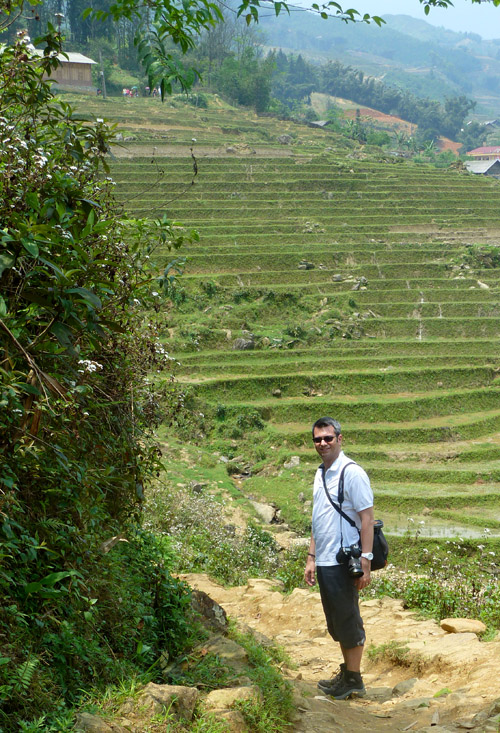
- Tags:
Follow Matthew's travels around the world…
I found a few shots Aude had hidden on her camera that I liked…

The few days we spent in Sapa were fantastic, and a real change from the hustle-and-bustle of Hanoi. But the part of the trip I had been most looking forward to was the cruise we’d booked on Halong Bay. In addition to having some fantastic scenery, we had heard great things about the food onboard the cruises and were generally looking forward to a few days relaxing on the water with no real fixed itinerary.
We just about survived the four-hour drive from Hanoi (driving headlong into opposing traffic while expecting them to veer onto the shoulder to let you pass takes some getting used to) and were subjected to the mandatory over-priced tourist rest stop at the halfway point. We arrived in the harbour at Halong Bay around lunchtime.
We booked the Princess 2 Junk. Our guide came to meet us at the port to take care of the luggage and any last minute arrangements. He asked if we ate everything, and I said that we did. Then he asked whether we ate dog, no doubt his Vietnamese attempt at a joke about what foreigners will and won’t eat. He was a little surprised when I pointed to a puppy playing nearby and suggested that "one that size would be okay," as I really only wanted to try a small taste.
We headed onboard, met the crew, and finished the last minute tasks of taking onboard fuel and water for the next few days. Thirty minutes later we were eating lunch on the deck of the boat as we pulled out of port.

In the port at Halong Bay, getting ready to set off on our cruise.

Junk cruises are big business here. There were at least 30 other junks in the harbour when we were setting off, most doing overnight or two-day trips. Luckily, Princess run their itineraries on the opposite side of the bay to most of the other tour boats, so aside from a few other Princess boats that we saw at the mooring point each evening, we were pretty much on our own.

The crew had a bunch of roses waiting for Aude as she came onboard, and they’d decorated the cabin with rose petals.

Settling in for our first lunch as we headed out to sea.

Following one of the other Princess junks travelling in the same direction.

A good lunch and a strong cup of Vietnamese coffee — time to start relaxing.

We were about 20 minutes out of port when we began to see some of the many islands for which Halong Bay is famous. Everything seemed to be wrapped in mist, which I guess is common, but it gave it an ethereal beauty.

More islands. There are 1’969 islands in total, but for the sake of brevity (and the fact that most of them look the same), these are all the pictures I’ll include.

Starting to look relaxed.

Woke up to a sunny morning on the second day, which was a nice surprise and a great way to start the day.

Not much other traffic where we were. Here, a fisherman passes by.

Lion Island. Most of the islands here have a name, and our guide loved to regale us with tales of the names of the islands. Either that, or he learned his English from the "Big Book of Animals". Because he told us about Turtle Island, Toad Island, Serpent Island, Monkey Island, Frog Island, Dolphin Island, and enough others to fill Noah’s Ark to capacity. Like someone else’s identical twins, perhaps he can tell them all apart, but they all look the same to me. Lion Island, at least, actually looked like a lion.

A floating village. About 150 people live here full-time, spending their entire lives on the water. Rather than trying to sell tourists unwanted trinkets, I was pleased that this village has made arrangements with our boating company — they welcome visitors, and rely on voluntary donations to help support their village. The result is a much more authentic experience for the visitor, and no hassle from unwelcomed salesmen. I wish they’d had the same system in some of the villages in Sapa, where we spent more time avoiding being sold something than actually enjoying what we were seeing.

An inlet near the floating village, where we were taken by rowboat. One of the most tranquil, most beautiful spots I’ve visited. Absolutely one of those places where the pictures don’t begin to do justice to the original.

A husband-and-wife fishing team.

The men play cars while a dog keeps watch. Or keeps a safe distance, hoping not to go into the pot. I’m not sure which.

Brightly coloured houses in the floating village. Donations mean that they’re able to replace the styrofoam blocks on which the houses float with plastic barrels. The barrels don’t break apart in the same way as styrofoam and are much more environmentally-friendly.

I particularly liked this house – neat and tidy with great, bold colours.

There’s a two-room schoolhouse in the village, built with tourist donations. School teachers from the mainland volunteer their time. Uncle Ho over the blackboard, of course.

Living on the water, the locals adapt quickly. This little girl was already pretty adept at getting about in a rowboat. Like every place on earth, it’s the kids that really capture the imagination.

As soon as this tourist boat pulled into the village, this little girl jumped to the helm and pretended to drive.

Sunset over Halong Bay, heading back into port.
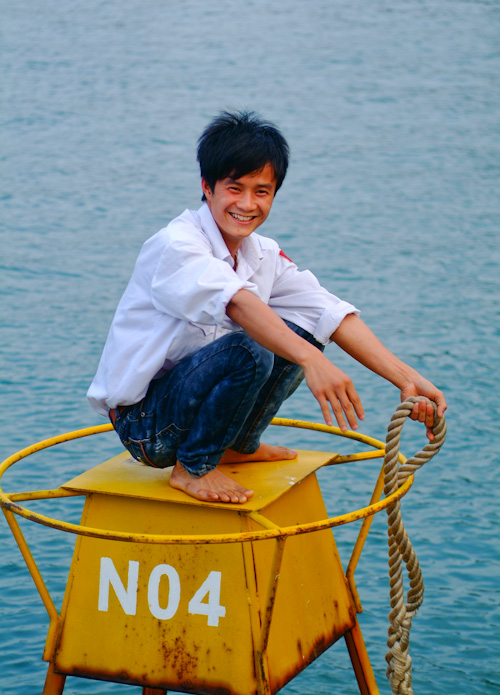
Our deck hand prepares for us to moor in our overnight sleeping spot.

The Princess 3, a twin boat to ours, that accompanied us for most of our trip. Very friendly Australian couple onboard who we bumped into several times when our itineraries crossed.

Three days at sea did the trick. Relaxed at last!

Coming back into the harbour at Halong Bay.
After two days in Hanoi, our itinerary takes us north, to the mountain town of Sapa. We boarded the overnight train from and headed out.
The overnight train was an interesting experience. There are three trains each day to Sapa, each taking about eight hours to make the journey. But each carriage on the train is owned by a different company, and they fit out the interior in their own style.
On our outbound journey, one thing became clear. The carriage we were in certainly didn’t have much money spent on noise insulation or suspension. We clicked and clattered all night, lurched back and forth and nearly flying out of bed every time the train came to a halt. The best way to describe it was like sleeping in a tumble dryer.
But we made it, pulling into the station around 5am. From there, it was another hour’s drive up the mountains to the hotel. It was a beautiful drive, climbing the mountain just as the sun was coming up. We finally arrived at our hotel – the Victoria Resort and Spa in Sapa.
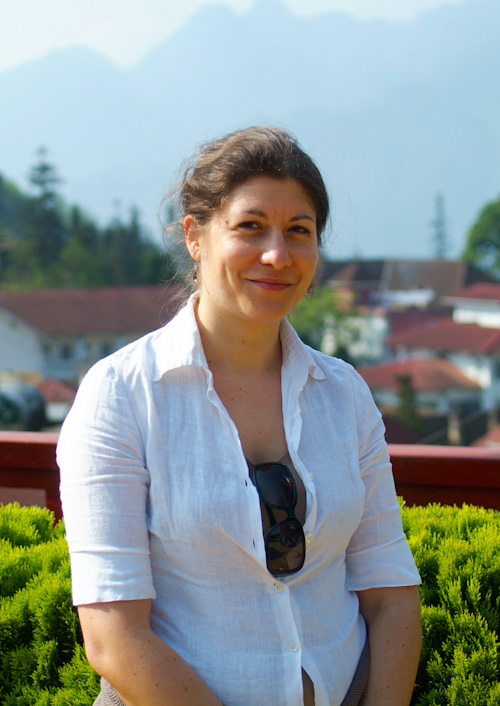
Aude outside the Victoria Hotel in Sapa
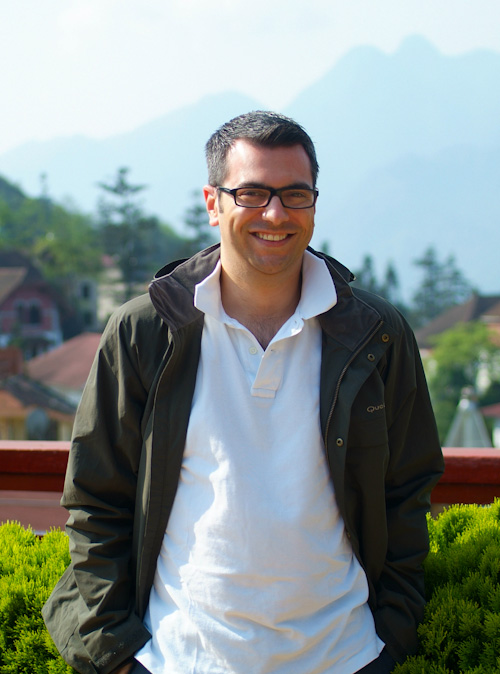
Matthew outside the Victoria Hotel in Sapa. Wearing a jacket. There was a big difference in temperature between Hanoi and Sapa, where it rarely got hotter than 20C.
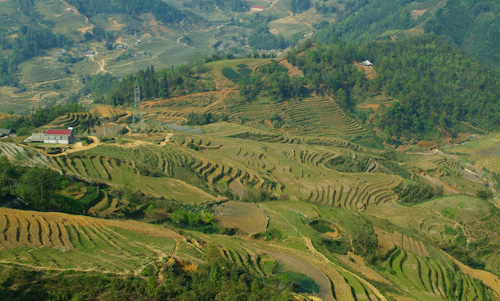
‘Dry’ rice fields
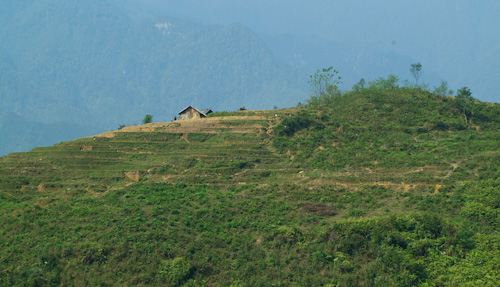
Pictures don’t really do it justice, but there was an enormous feeling of space. The mountain ranges just seem to go on and on.
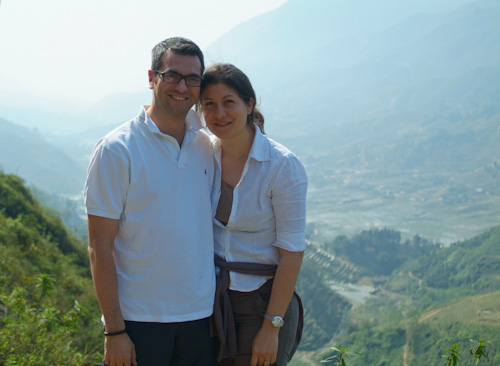
A quick photo by the side of the road.
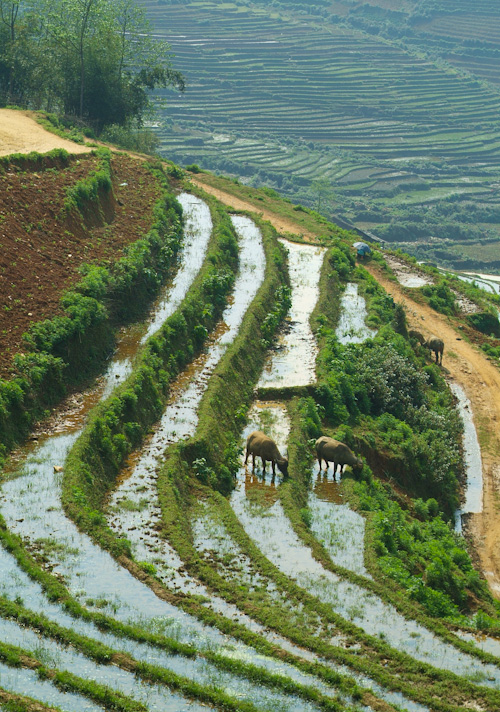
The rice fields here are difficult to maintain. The Hmong people were some of the last to arrive in Vietnam and ended up withe least desirable, hardest-to-farm land in the mountains and hillsides.
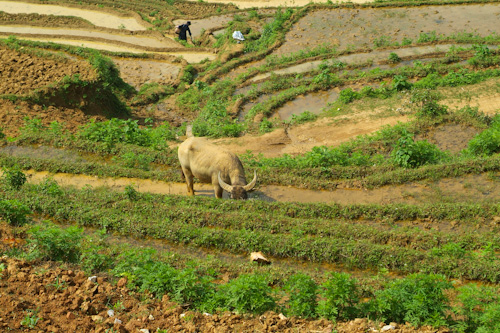
Farming here is still done the traditional way — by hand and using oxen.
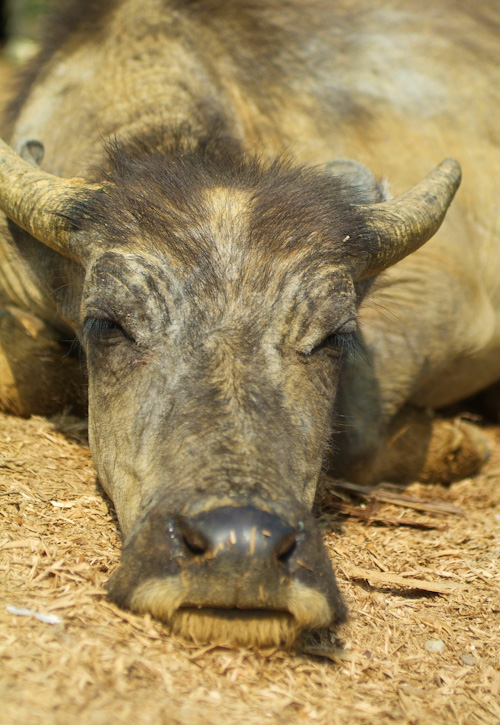
It’s tough work being an ox.
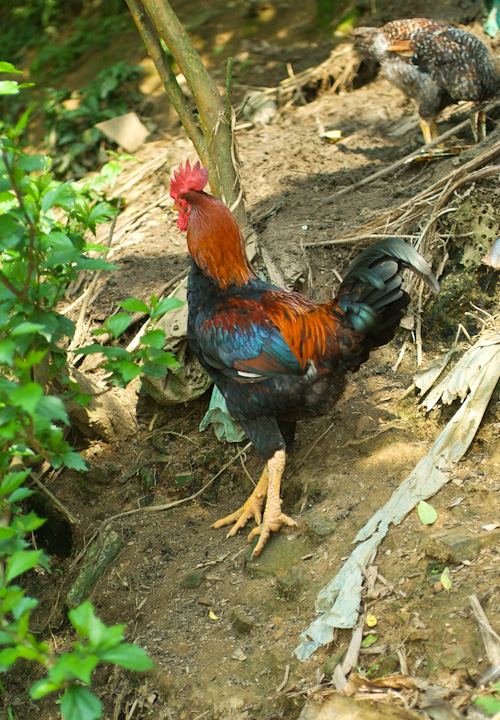
Spectacular colours meant I couldn’t miss taking a photo of this rooster.
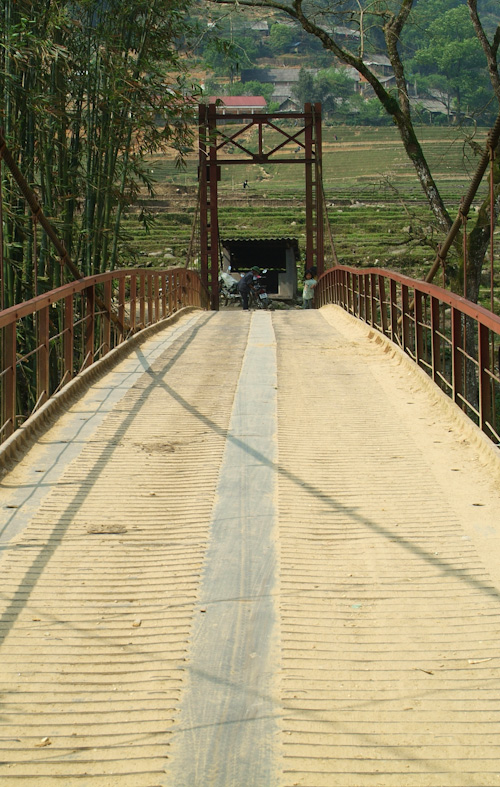
A bridge leading to one of the Hmong villages.
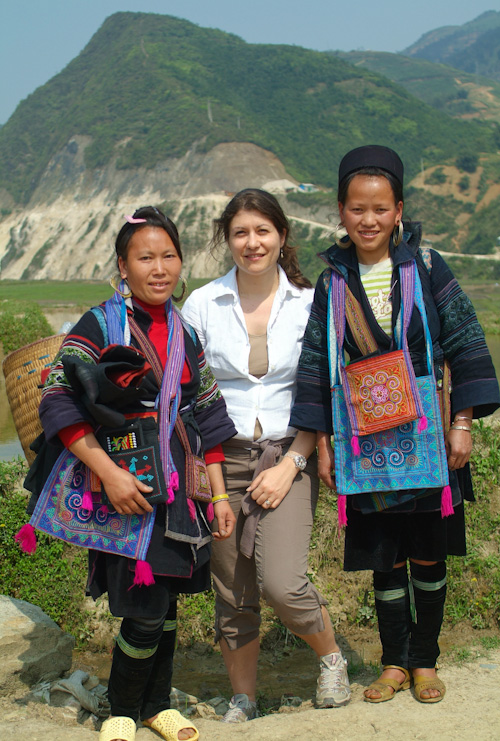
Our two Hmong shadows. These two girls followed us for nearly an hour, trying to sell us their handicrafts. You’ve got to give them credit for being persistent.
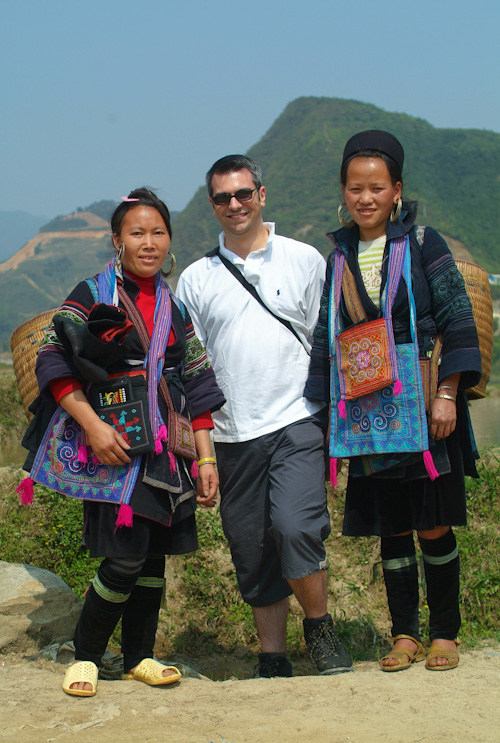
Matthew with his two new Hmong friends. One of them spoke exceptionally good English, all learned from her conversations with tourists.
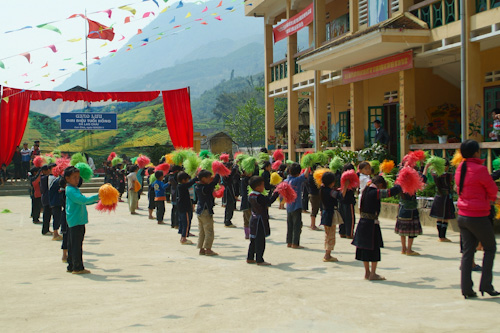
Children exercising at a local school.
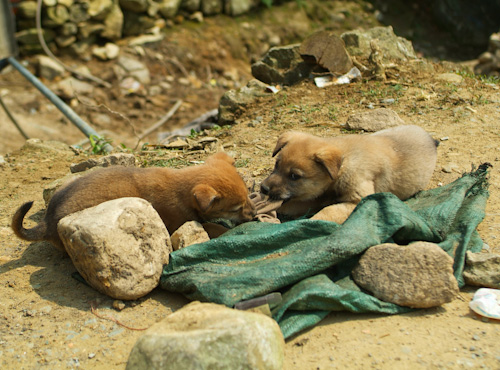
Two new puppies tussle over a toy. Most dogs here start out as a combination of pets & garbage disposals (eating leftover table scraps). And eventually, most end up as dinner, particularly in this part of the country.
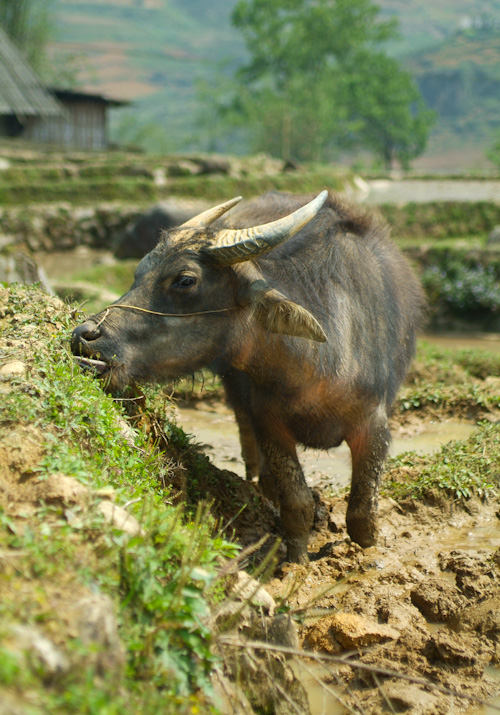
Getting up-close and personal with an ox.
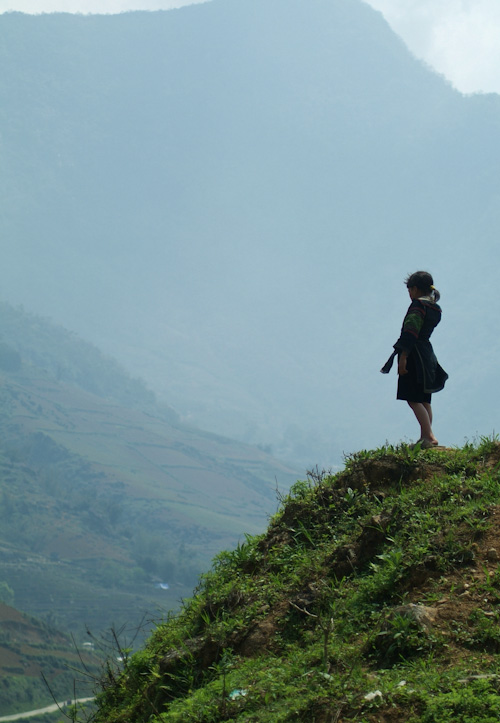
A young Hmong girl takes a minute to herself.
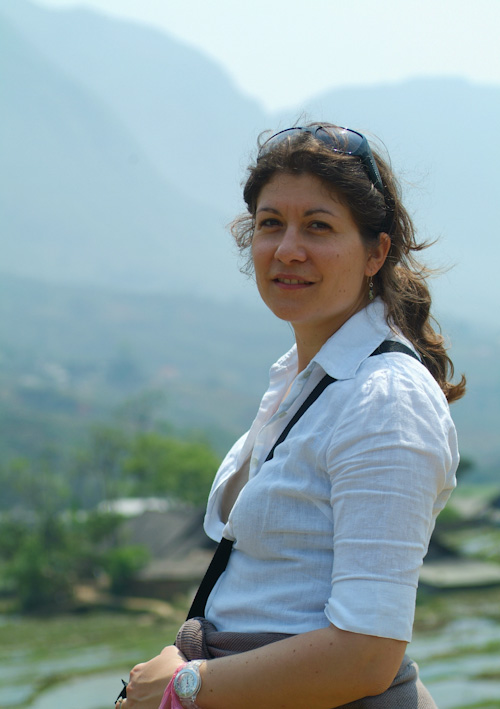
Aude on our walk through the Hmong villages.
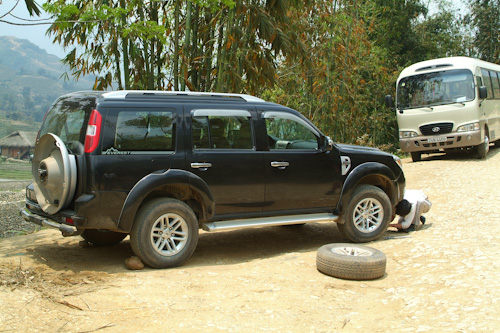
Needless to say, the roads around these villages are pretty rough. We came back from our walk to discover our driver changing the tyre. He changed it very quickly – suggesting to me that this is something that happens pretty regularly.
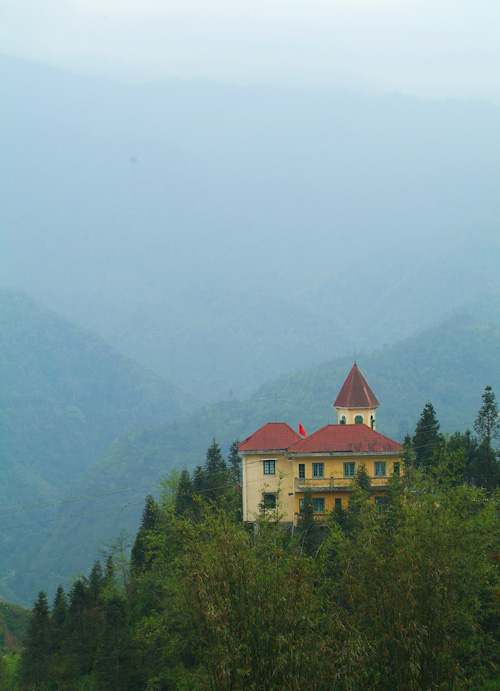
An old building built by the French, now being used as an ecology centre. Perched by itself on the side of a mountain, it feels very isolated.
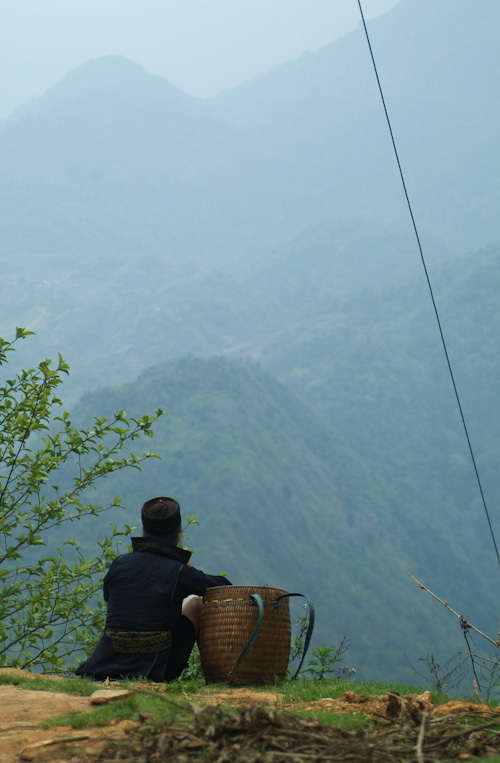
A Hmong girl stops for lunch on the side of the mountain.
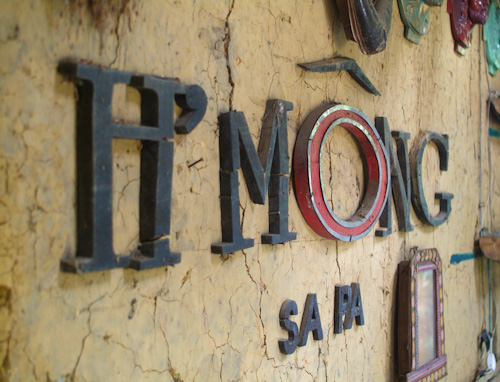
They’ve made a few concessions for the new-found groups of tourists that have arrived in their villages. Like a gift shop.
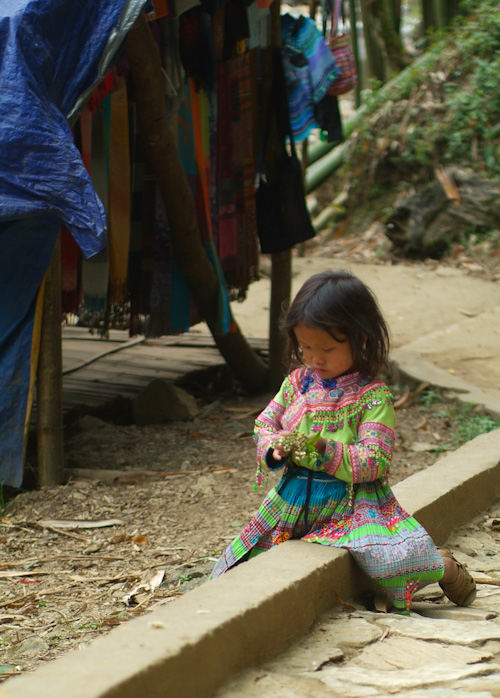
A little Hmong girl playing.
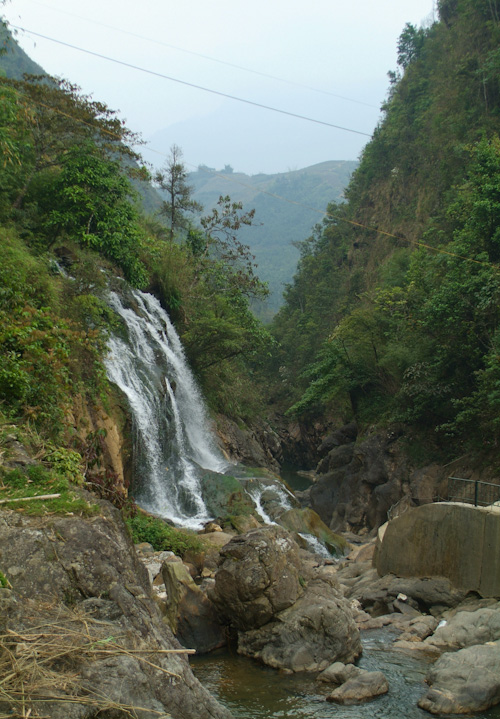
A waterfall, and a few minutes of unexpected calm.
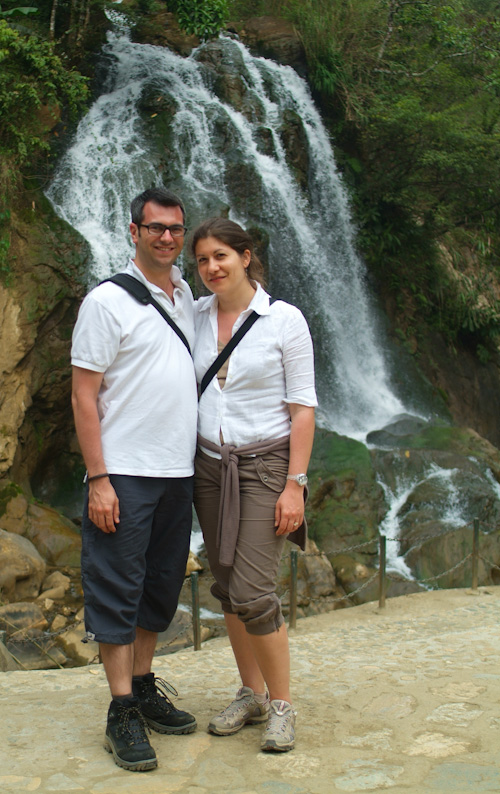
Tourists!
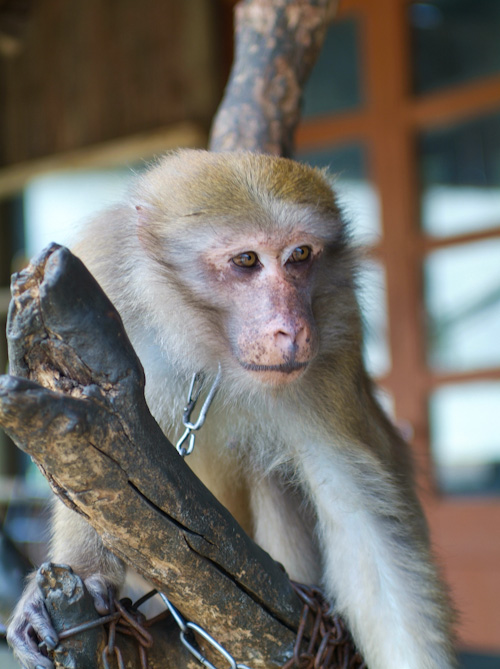
Cheeky monkey!
Time for an escape from the hustle-and-bustle of Hanoi, and a chance for a visit to what was obviously the place to have your wedding photos taken, judging by the number of brides being snapped… We had a few hours on our last morning in Hanoi and we decided to spend them walking through the Hanoi Botanical Gardens, a pretty park just on the edge of one of the main lakes in Hanoi.
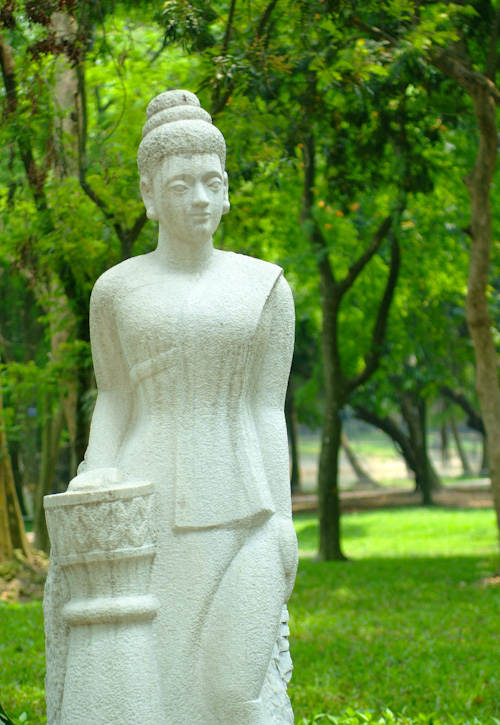
Statue in the centre of the Hanoi Botanical Gardens
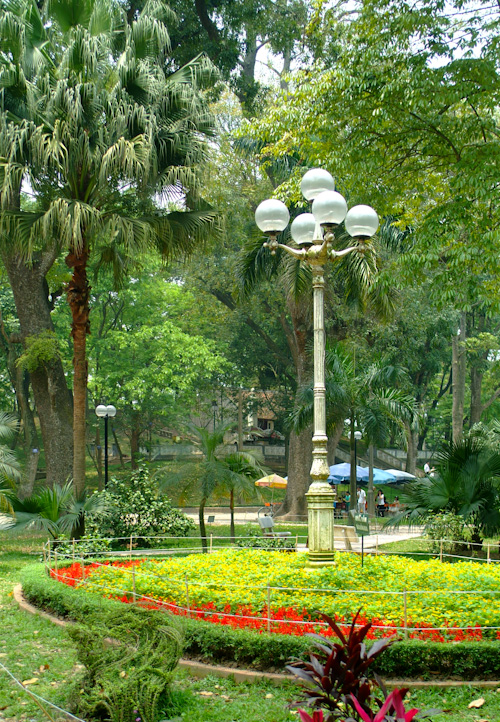
Flowers in full bloom.
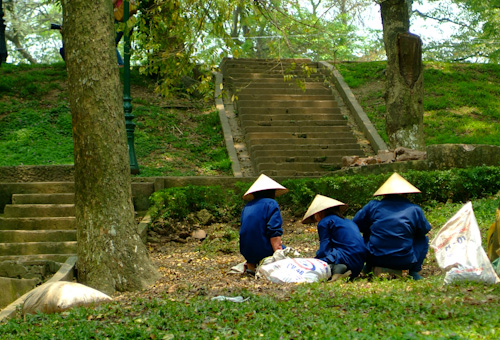
Workers tend to the landscaping.
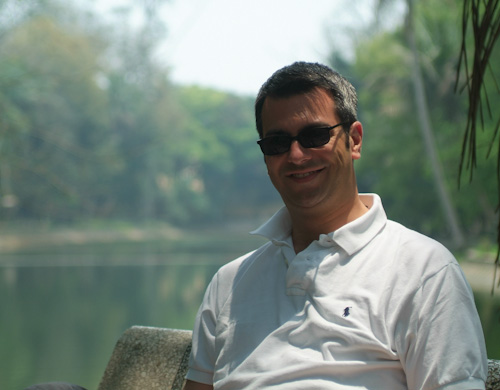
Relaxed in the Botanical Gardens.
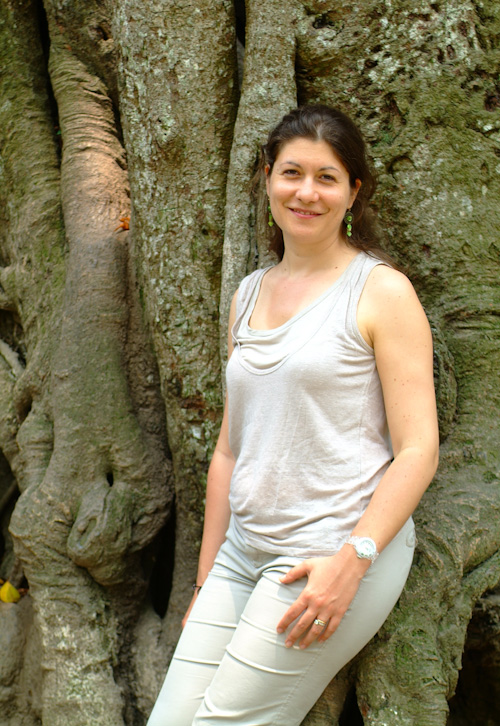
Aude in the Botanical Gardens
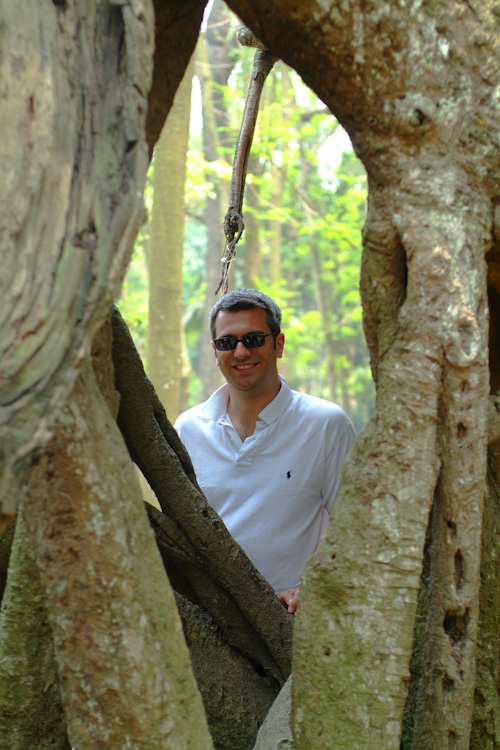
Matthew in the Botanical Gardens.
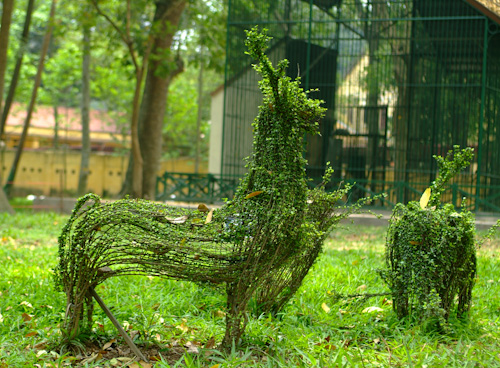
Vegetarian meets hunter.
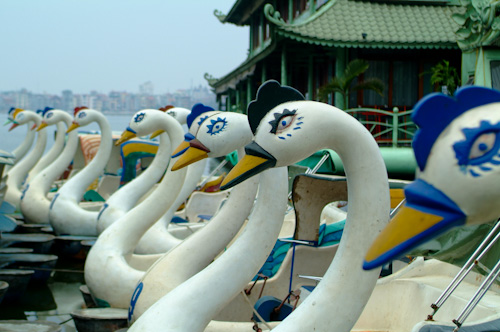
Swans.
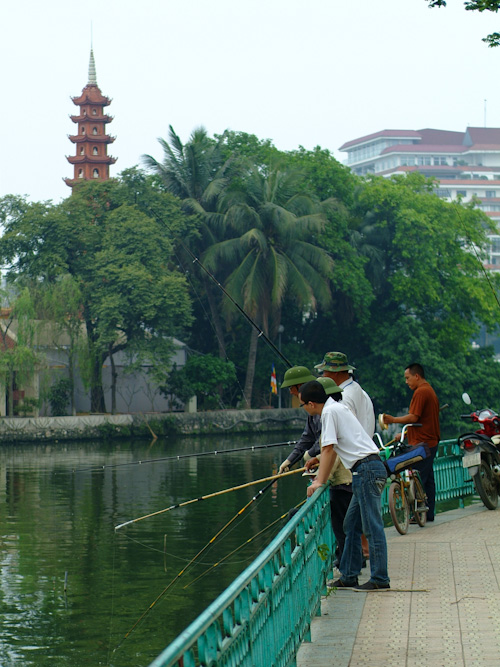
Fishermen on a lunchtime break.
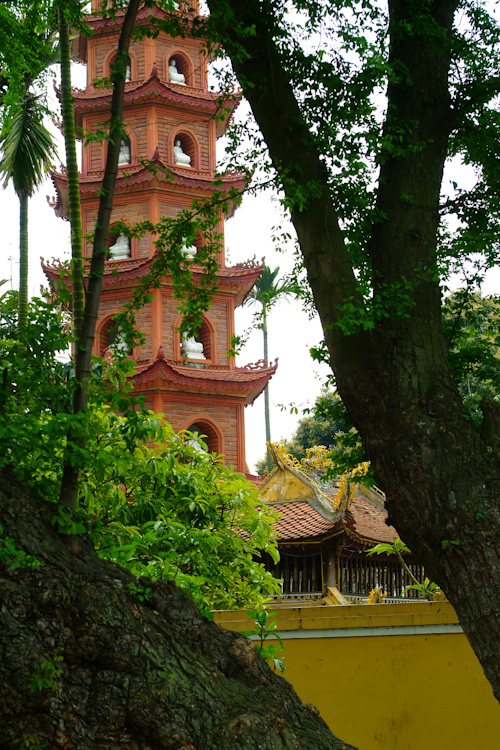
Temple.
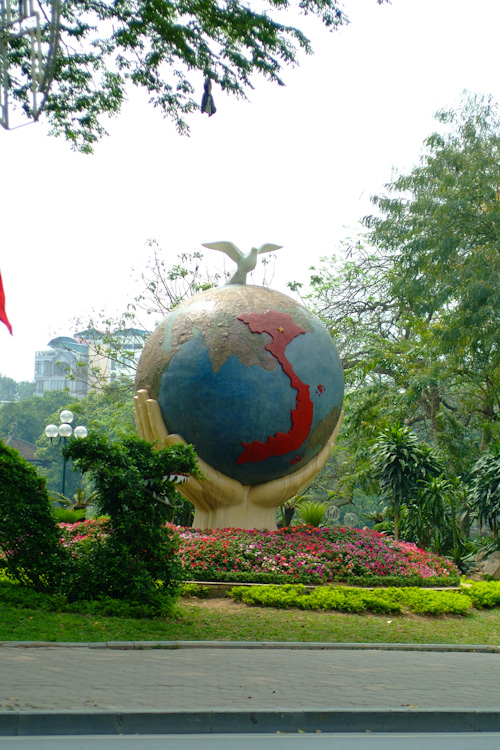
Peace memorial.
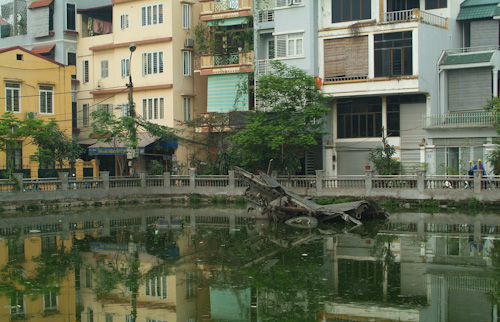
One of the things that struck me about Vietnam is that reminders of the war are everywhere. Not just in museums and plaques, but in the fabric of the country.
The first thing that you notice is that there are very few older people in Vietnam. Most of the people here are young, the generation born after the war. And in parts of the country where the conflict was heaviest, there are still battle-scars everywhere — the buildings, the landscape, the people. In the streets, you see beggars who suffers from missing or deformed limbs, either direct victims of the combat or the sadder case of the indirect victims of Agent Orange.
In Hanoi, we were tipped off about B-52 wreckage that laid in a pond in the middle of a residential district. This isn’t a monument or memorial, nor is it on the tourist track (several of our books made no mention of it, and it took the driver quite a lot of wrong turns and asking directions to eventually find this place, which sits unmarked at the end of an alley in residential Hanoi).
But there it is — a testament to the events that happened here 40 years ago.
Several people recommended that we visit the Hanoi Military Museum. Definitely worth the trip, and an interesting chance to see 20th century Vietnamese military history from their perspective — their journey towards independence from the French and later, the “American” war. The museum is a story of the Ho Chi Minh-era rebellion struggles, and a very important part of the story of how the modern Vietnamese see themselves.
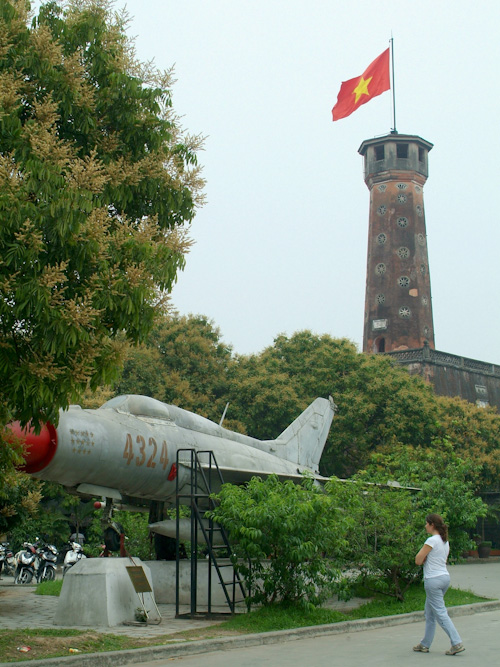
A MIG-21 sits in front of the Hanoi Military History Museum, with the ‘Cot Co’ Flag Tower, built in the early 1800s, in the background.
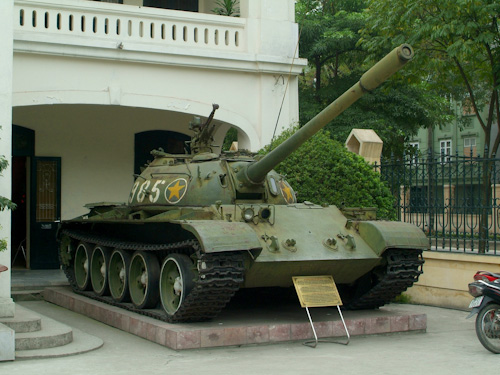
An American tank at the entrance of the museum.
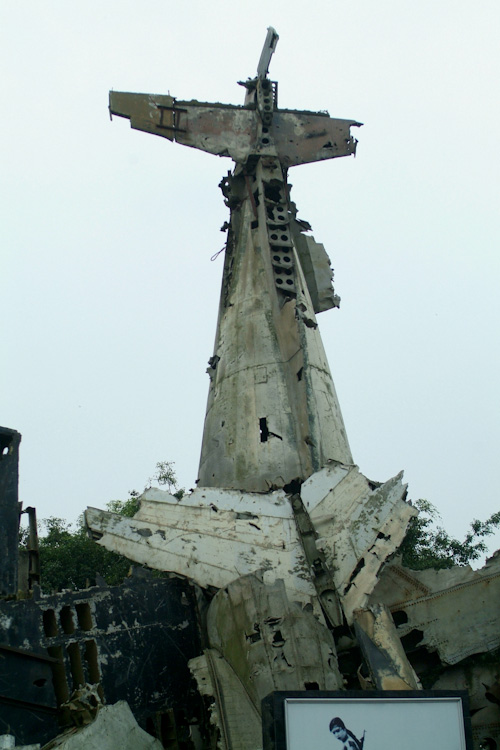
A sculpture crafted out of the remains of B52 bombers shot down over Vietnam during the Vietnam War.
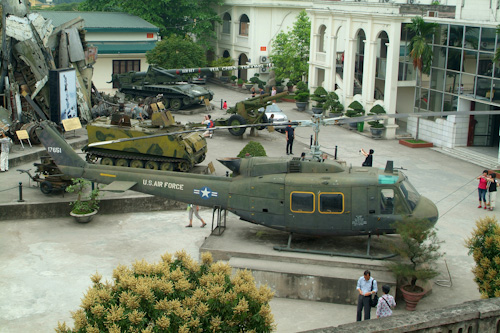
A collection of US military equipment captured during the Vietnam War on display.
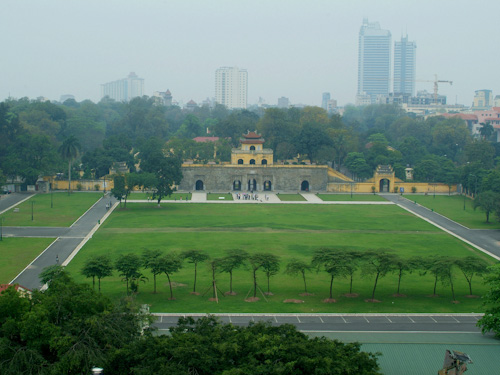
A view over the Temple of Literature as seen from the ‘Cot Co’ Flag Tower. Don’t tell the Vietnamese government that I took this photo, as there were signs everywhere indicating that photography from the tower was strictly forbidden.
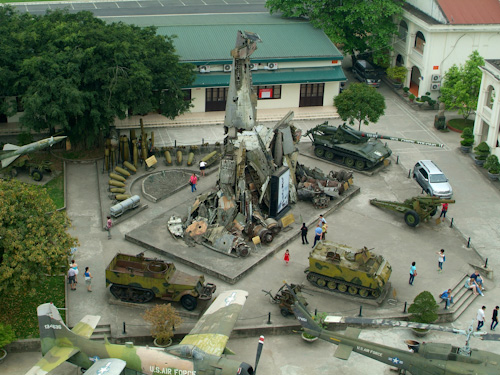
Looking down into the courtyard of the Hanoi Military History Museum from the Citadel.